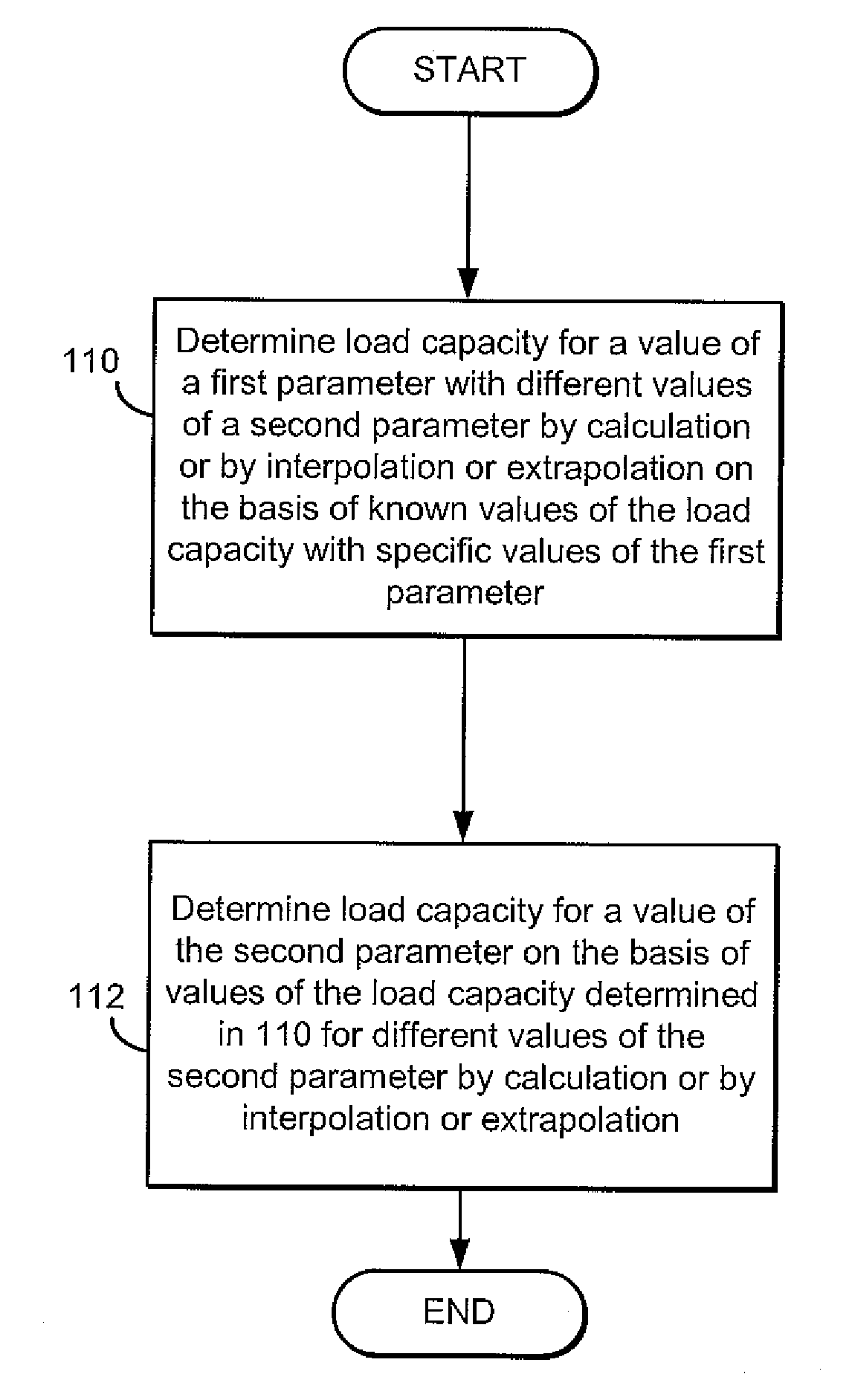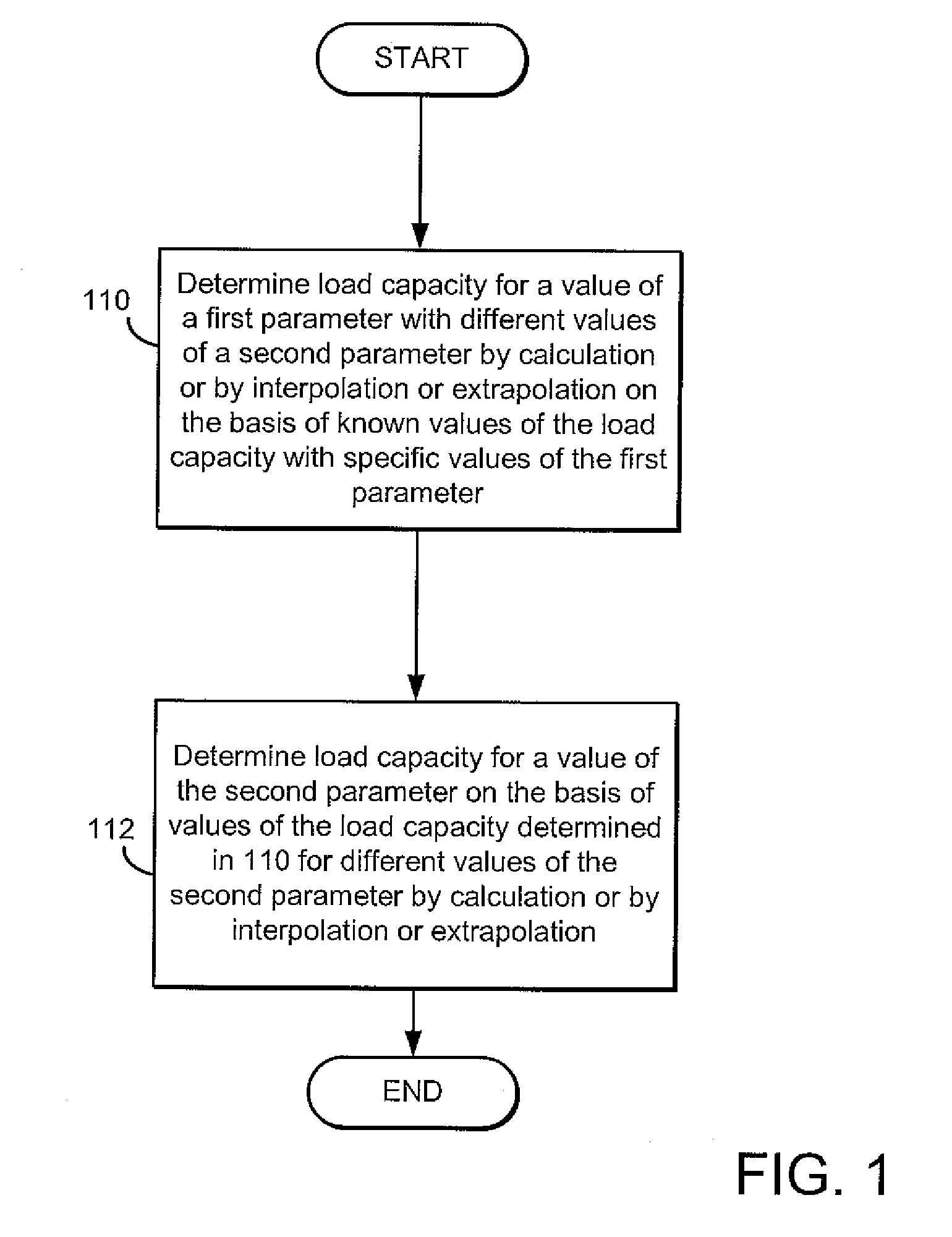Method for Determining the Load Capacity of Cranes
a technology for determining the load capacity and cranes, applied in the direction of cranes, instruments, electric digital data processing, etc., can solve the problem of relatively inaccurate determination of load capacity, and achieve the effect of small load capacity and safe operation
- Summary
- Abstract
- Description
- Claims
- Application Information
AI Technical Summary
Benefits of technology
Problems solved by technology
Method used
Image
Examples
Embodiment Construction
[0020]Further details of the present disclosure will now be explained in detail with reference to an embodiment described below.
[0021]The calculation of the load capacity is effected for arbitrary freely selectable values of a parameter within a range of parameters. The value of a parameter can for instance be entered on a monitor by a numerical keyboard. Alternatively, it is conceivable to select the parameter value from a number of finely graduated, specified values by dial-up or by a “” key and by actuating an Enter key.
[0022]In a first example, the parameter values for a derrick crane with luffing jib without derrick ballast are a main boom angle of 83° and an outreach of 21.7 m. The dependence of the admissible load capacity on the outreach for the main boom angles of 77° and 87° is known. In a first step, there is first determined the load capacity value for an outreach of 21.7 m by interpolation between the known points of support at 20 m and at 22 m, both with the main boom ...
PUM
| Property | Measurement | Unit |
|---|---|---|
| boom angle | aaaaa | aaaaa |
| boom angle | aaaaa | aaaaa |
| radii | aaaaa | aaaaa |
Abstract
Description
Claims
Application Information
 Login to View More
Login to View More - Generate Ideas
- Intellectual Property
- Life Sciences
- Materials
- Tech Scout
- Unparalleled Data Quality
- Higher Quality Content
- 60% Fewer Hallucinations
Browse by: Latest US Patents, China's latest patents, Technical Efficacy Thesaurus, Application Domain, Technology Topic, Popular Technical Reports.
© 2025 PatSnap. All rights reserved.Legal|Privacy policy|Modern Slavery Act Transparency Statement|Sitemap|About US| Contact US: help@patsnap.com


